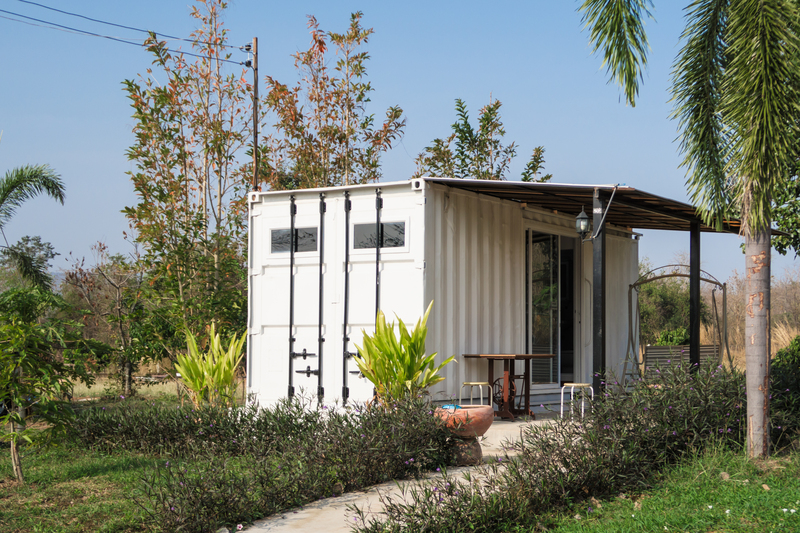Creative Pathways for Wood Waste Management
Wood waste management is becoming an increasingly important topic in today's environmentally conscious world. As industries expand and urban development accelerates, the need to find sustainable solutions for wood waste management becomes critical. This article explores innovative and creative pathways for managing wood waste, offering both ecological and economic benefits.
Understanding Wood Waste
Wood waste can originate from various sources, including construction sites, furniture production, and household activities. This waste can take many forms, such as sawdust, chips, and offcuts. Proper management of this waste is crucial to minimize environmental impact and promote sustainable practices.
The Impact of Wood Waste Mismanagement
When wood waste is not managed effectively, it often ends up in landfills, contributing to the increasing problems related to landfill volume. Moreover, as wood decomposes, it releases methane--a potent greenhouse gas--adding to environmental pollution.
Innovative Approaches in Wood Waste Management
1. Recycling and Reclaiming Wood Waste
- Recycled Wood Products: Wood waste can be recycled to create new wooden products, such as particle boards, furniture parts, and decorative items. This process not only reduces waste but also requires less energy compared to traditional processes.
- Reclaimed Wood: Utilizing old wood to make new products is an effective way to manage waste. Reclaimed wood is often used to create *rustic-style furniture* and various architectural elements.
2. Energy Production
- Bioenergy: Wood waste can be converted into bioenergy through processes like gasification and anaerobic digestion. This approach reduces reliance on fossil fuels and promotes renewable energy sources.
- Pellets and Briquettes: Compressing wood waste into pellets or briquettes for biofuel is another efficient use of resources, providing an alternative energy source that is both sustainable and efficient.
3. Creative Reuses of Wood Waste
Finding creative pathways for using wood waste can stimulate innovation and open new market opportunities.
- Artistic Creations: Many artists and designers use wood waste to create sculptures, installations, and unique home d?cor items, giving new life to discarded materials.
- DIY Projects: Encouraging community members to use wood waste for DIY projects can reduce the burden on waste management systems and spark creativity. From making garden trellises to crafting birdhouses, the possibilities are endless.
4. Composting and Mulching
Another effective method for managing wood waste is through composting and mulching. Smaller wood particles like sawdust can be used in compost to enrich soil, while larger pieces can serve as mulch in gardens and landscaping projects, aiding in moisture retention and weed suppression.
Economic Advantages of Effective Wood Waste Management
Creative wood waste management strategies bring about significant economic benefits. By converting waste into valuable products, businesses can reduce costs associated with raw materials and waste disposal. Furthermore, these practices can create jobs in the recycling and sustainability sectors.
Cost Savings
- Lower disposal costs through waste reduction.
- Reduction in purchasing costs via reclaimed materials.
Market Opportunities
- Development of new products, leading to increased market diversity.
- Enhanced company reputation as a sustainable and environmentally responsible business.
Challenges in Implementing Wood Waste Management Practices
Despite the advantages, several challenges need to be addressed when implementing wood waste management strategies:
- Infrastructure Requirements: Developing efficient processing and recycling systems requires significant investment.
- Market Demand: Ensuring that there is sufficient demand for recycled and reclaimed products is crucial for the sector's sustainability.
Conclusion
Creative pathways for managing wood waste not only offer a viable solution to the environmental challenges posed by this waste but also provide economic opportunities and savings. By adopting innovative recycling methods, converting waste into energy, and leveraging waste for creativity, we can effectively minimize the impact of wood waste on our environment and contribute to a more sustainable and prosperous future. Embracing these strategies will require collaboration across industries, governments, and communities, underscoring the necessity of cohesion in environmental efforts.
Wood waste management stands as a vital consideration in our pursuit of sustainability, offering a promising domain for innovation and responsible environmental stewardship.

